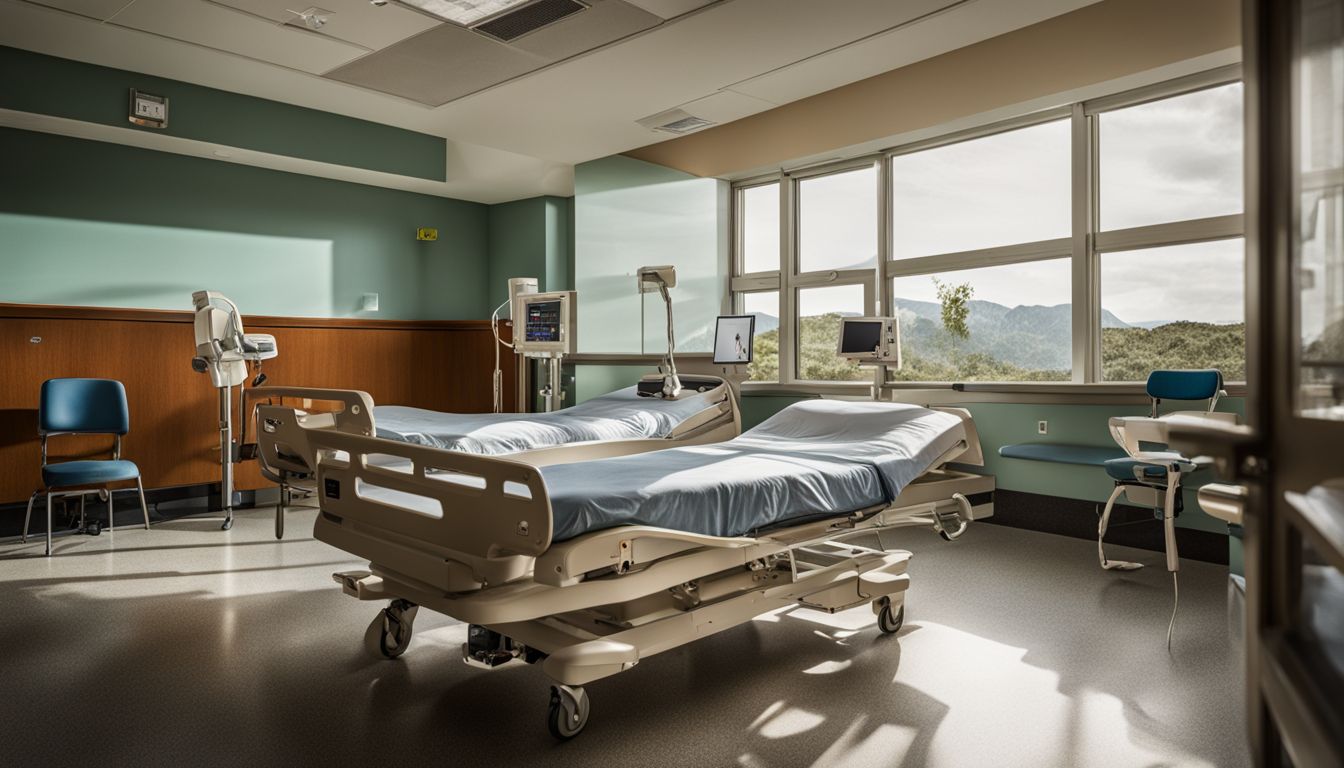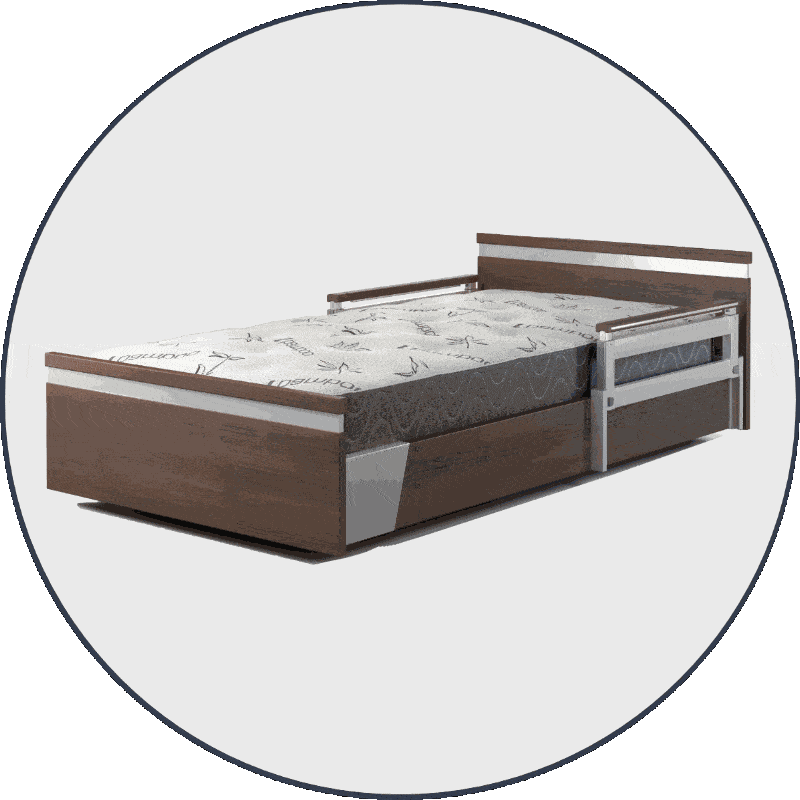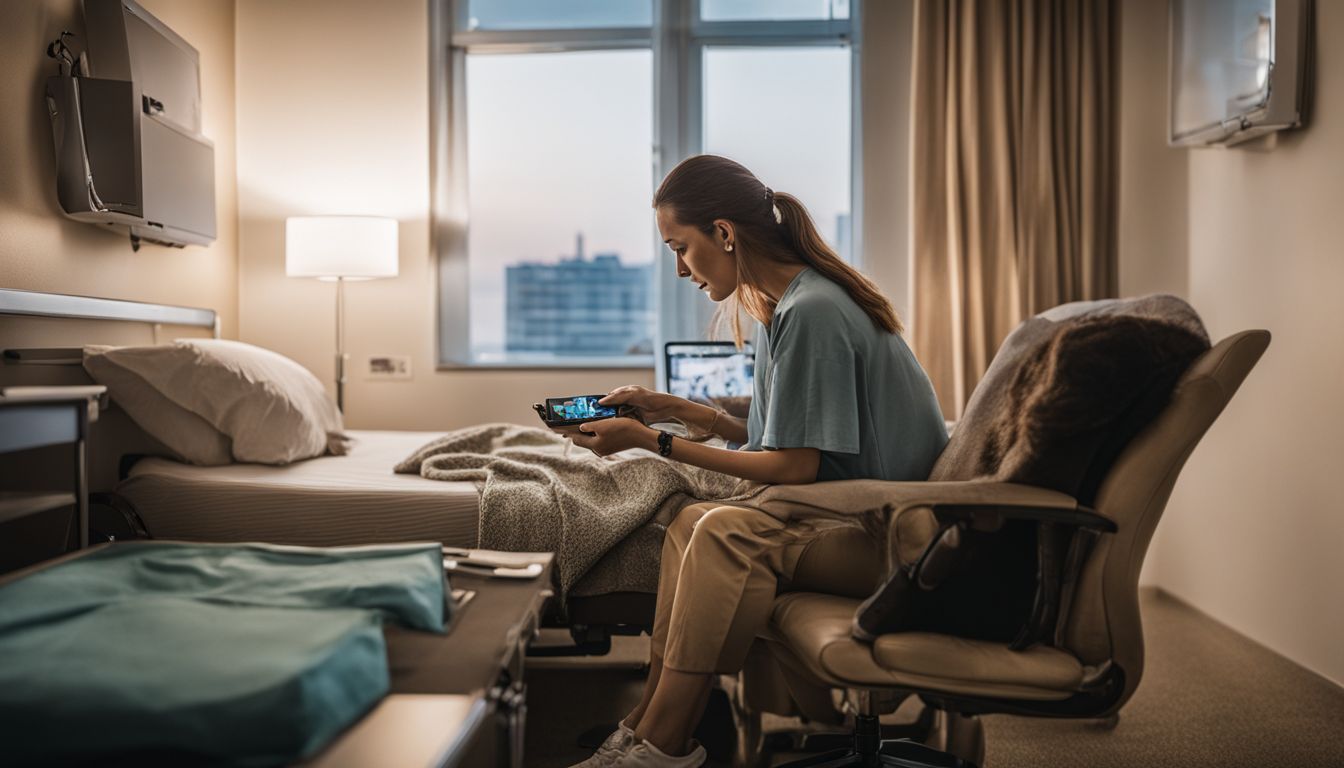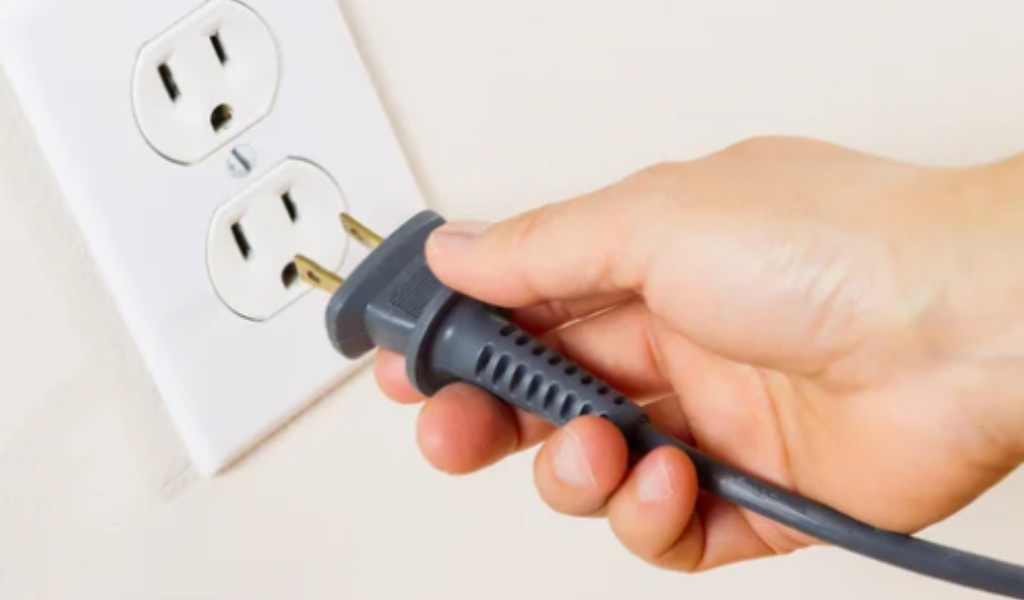Experiencing unexpected movements in your hospital bed can be unsettling. Hospital beds move due to reasons like mechanical failures and uneven floors. This article will guide you through understanding these causes and how to address them, ensuring patient safety and comfort.
Keep reading for insights into securing stability in healthcare environments.
 Hospital beds move when their motors break or controls go wrong. This can make patients feel uncomfortable and upset care routines.
Hospital beds move when their motors break or controls go wrong. This can make patients feel uncomfortable and upset care routines.
 Wheel locks keep a bed still. Bad locks can make a bed move when it shouldn’t.
Wheel locks keep a bed still. Bad locks can make a bed move when it shouldn’t.
Hospital beds move for reasons like mechanical issues, wheel lock problems, and uneven floors. Fixing these takes ensuring safety and comfort for patients. Regular checks and repairs keep the beds stable. Choosing strong materials helps too. Teaching staff how to use and care for beds is also key. This makes hospital stays better for everyone involved.
Key Takeaways
- Hospital beds move because of broken motors, control panel problems, bad wheel locks, and uneven floors. Fixing these fast keeps patients safe.
- Regular checks and maintenance on hospital beds stop them from moving when they shouldn’t. This means looking at wheel locks and making sure all parts work right.
- Good bed frames use strong materials and smart design to help patients stay comfortable. Features like adjustable heights and secure wheel locks are important.
- Teaching hospital workers how to care for beds makes sure they can keep patients safe. This includes knowing how to fix problems quickly.
- Room conditions like the right temperature, light, and less noise make patients more comfortable. Keeping these things good helps a lot.
Mechanical Malfunctions and Bed Movement
 Hospital beds move when their motors break or controls go wrong. This can make patients feel uncomfortable and upset care routines.
Hospital beds move when their motors break or controls go wrong. This can make patients feel uncomfortable and upset care routines.
Motor failures and their impact on patient comfort
Motor failures in hospital beds can make it hard for patients to change their positions. This leads to discomfort or even hurts them because they cannot move. It is very important to fix motor issues fast since they help keep patients safe and comfortable.Immediate attention is required to address motor failures.Caregivers need to check the beds often. They must make sure everything works right, especially the motors. If a motor does not work, patients might get pressure sores or have other health problems. Taking care of these motors helps prevent bigger issues and keeps everyone in the hospital happier and healthier.
Control panel malfunctions and their effect on patient care
Control panels are key for adjusting hospital beds. When they break, nurses cannot move the bed up or down. This can make it very hard to care for people in the hospital. Patients may get pressure ulcers if they stay in one position too long. It also makes safe patient handling hard, increasing fall risks. Fixing control panels fast is a must to keep patients safe and comfortable. Regular checks ensure these parts work right and help prevent sudden problems during care. Hospitals need to have clear plans for checking and fixing these issues quickly to avoid delays in patient care and lower the risk of skin breakdown or injuries from falls.Wheel Lock Issues and Bed Stability
 Wheel locks keep a bed still. Bad locks can make a bed move when it shouldn’t.
Wheel locks keep a bed still. Bad locks can make a bed move when it shouldn’t.
Importance of regular inspections and maintenance
Regular checks and upkeep of hospital beds are essential to keep them in top shape. Inspections catch problems with wheel locks early, making sure they work right and stop the bed from moving when it shouldn’t. This care stops parts from getting stiff or clogged with dirt, which can mess up how the bed works. Nurses must do these checks often to make sure patient safety is always first. Maintenance keeps the beds stable and makes sure patients are comfortable and safe from falls or injuries. By keeping up with routine maintenance, healthcare workers can prevent issues that might hurt a patient’s recovery or comfort. This includes making sure height adjustments work smoothly for different needs, side rails are secure for those at risk of falling out of bed, and ensuring the whole system supports critical tasks without fail.Consistent maintenance ensures every patient experiences comfort and safety.
Routine maintenance and lubrication to prevent stiffness and debris buildup
Keeping hospital beds in top shape requires routine maintenance. Lubrication stops wheel locks from getting stiff and keeps debris away.- Check wheel locks every month to ensure they move freely. This prevents falls.
- Use the right oil or grease on all moving parts. This stops them from getting stuck.
- Clean wheels and locks regularly with a mild cleaner. It helps avoid the buildup of dirt and grime.
- Inspect the bed frame for any signs of wear or damage during each maintenance schedule. Fix issues early to maintain stability.
- Make sure all staff know how to perform basic care on beds. This includes checking for loose bolts or damaged parts.
- Follow manufacturer’s guidelines for deep cleaning and maintenance checks. This ensures the bed functions well for a long time.
- Keep a log of all maintenance tasks performed on each bed. This helps track when the next check-up is due.
- Replace parts that show significant wear immediately to keep patients safe and comfortable.
Uneven Flooring and its Impact on Bed Stability
Uneven floors can make hospital beds shake. This shakes can harm patients during care.Disruption of bed stability and potential hazards during medical procedures
Floors that aren’t level cause hospital beds to become unstable. This situation is dangerous during medical tasks. Oftentimes, these instabilities lead to accidents or falls, putting patients at higher risk especially when they are being moved or treated. For safety, it’s critical to fix floor problems quickly. Every medical task requires a stable bed. Without stability, patients can suffer from more injuries or complications during procedures like inserting IVs or adjusting their position for comfort and health needs. Next, we must check and fix any issues with the bed frames and wheels to ensure every patient stays safe.Assessing and addressing flooring irregularities
After identifying how bed movement can disrupt medical procedures due to uneven flooring, it’s crucial to inspect patient room floors closely. Checking for irregularities ensures the beds stay stable, keeping patients safe and comfortable. Routine floor assessments should become a standard process in hospital maintenance protocols. To fix any found issues, hospitals must address these floor problems right away. Proper maintenance of the floors supports overall patient care quality by maintaining bed stability during critical moments like medication delivery or emergency treatments. By setting regular inspections as part of their care routine, health professionals guarantee an environment that is conducive to healing and minimizes risks associated with unstable beds.Bed Frame Design and Functionality
Good bed frames are key for patient safety and comfort. They need strong materials and smart designs, like adjustable heights and secure wheel locks, to work well in hospitals.Importance of high-quality materials and design ergonomics
High-quality materials like reinforced steel and aluminum make hospital beds strong. These materials stop the bed frame from breaking. Design ergonomics keep the bed from moving when it shouldn’t. They make sure patients are safe and comfortable. Adjustable height settings and locking mechanisms on wheels help too. Doctors, nurses, and carers can move these beds easily to care for patients better. Regular checks keep the beds in good shape so they last longer. Patients with conditions like dementia or frailty need stable beds to prevent falls.The right design and materials ensure patient safety and comfort.
Role of adjustable height settings and locking mechanisms on casters
Moving from materials and design, we find that adjustable height settings on beds play a crucial role in patient care. This feature allows caregivers to change the bed’s height easily. It makes transferring patients safer and more comfortable. Locking mechanisms on casters add to this safety by keeping the bed still during care or procedures. These locking systems ensure the bed does not move unexpectedly, reducing falls and injuries. With these features, beds can be adjusted for specific medical needs like lung support or preventing swelling. They are key in providing quality care and comfort for all patients, showing how important design is in healthcare equipment function.Staff Training and Communication
Teaching hospital workers how to use and look after beds is key. They should talk about bed settings when they switch shifts.Regular training on bed operation and maintenance protocols
Regular training boosts staff ability to handle hospital beds properly. This improves patient safety and equipment function.- Hospital workers learn to check beds before use, spotting issues like loose parts or damage.
- Training includes how to fix common problems, reducing delays in patient care.
- Nurses get hands-on practice with bed controls, ensuring comfort and safety for patients.
- Maintenance teams are shown how to keep beds working well, doing tasks like oiling parts to stop them from getting stuck.
- Staff learn about wheel locks and how to keep the bed still, stopping falls and injuries.
- They’re taught to adjust beds correctly, making sure patients can breathe easily and avoid pressure sores.
- Training covers cleaning techniques that stop germs from spreading in the hospital.
- Workers discuss what to do if a bed stops working right during an emergency, keeping patients safe.
- Sessions include how to move beds smoothly through halls without bumping into things or people.
- Everyone is updated on new bed features and technology, so they can provide the best care possible.
Communication of bed settings during shift changes
Training staff on bed operation ensures they know how to adjust beds for patient comfort and safety. Next comes making sure these settings are right during every shift change. This step is key for keeping patients safe and comfortable. Nurses must share exact bed settings, like height and position, with the next team. This avoids unwanted movements that could harm or unsettle the patient. For example, if a patient needs their bed in a specific position due to respiratory issues, this detail has to be clearly passed on. Writing down these details helps avoid mistakes. Sharing this information also reduces risks of falls or discomfort for those in care. It’s all part of giving good quality care in hospitals.Environmental Factors Affecting Patient Comfort
Room conditions like temperature, lighting, and noise can change how comfortable patients feel. Keeping these levels right helps the bed work better for the patient’s needs.Room temperature, lighting, and noise levels
Keeping the room between 68-72°F ensures comfort for patients. Proper airflow keeps humidity right and takes away bad air. Lights need adjusting to make a calm place. Keep noise low to help patients feel better. These steps lead to better health results. Regular checks keep temperature, lighting, and sound good. This means using medical equipment right and avoiding falls or errors in giving medicine. Making sure of these things helps both short-term visitors and those staying longer with serious conditions stay as comfortable as possible.Maintenance and inspections for optimal functionality
To keep hospital beds working safely and correctly, regular checks are a must. Staff should look for any signs of damage or wear and tear. They also need to make sure all moving parts get enough lubrication according to schedules. Testing electronic controls and motors often ensures everything works as it should for patient care. With precise maintenance routines, beds remain stable and comfortable for patients. This includes fixing wheel locks to stop unwanted movements and keeping the bed frame in top condition. These actions lower the chance of falls prevention issues or discomfort during use. Regular staff training on these protocols keeps everyone up-to-date on how to manage bed functionality properly, ensuring quality care for patients across health outcomes areas like geriatric or acute respiratory distress syndrome management.Hospital beds move for reasons like mechanical issues, wheel lock problems, and uneven floors. Fixing these takes ensuring safety and comfort for patients. Regular checks and repairs keep the beds stable. Choosing strong materials helps too. Teaching staff how to use and care for beds is also key. This makes hospital stays better for everyone involved.
















